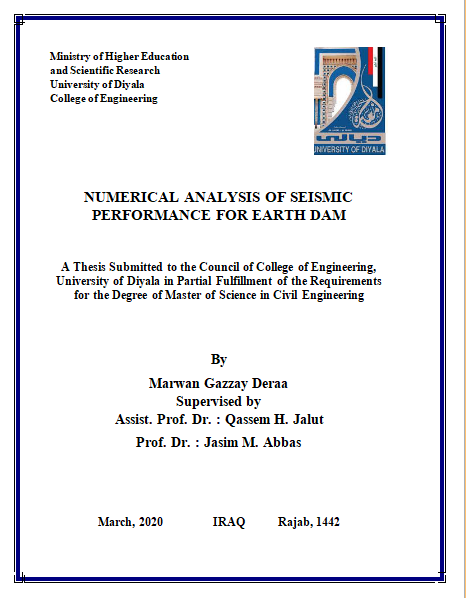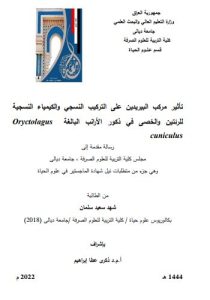Abstract
Many of earth dams are located within active seismic zones which dictates many efforts to be applied to analyze the seismic behavior of these structures since seismic loads may cause a serious damage to the earth dams like excessive settlement, instability and internal cracking. In order to develop the knowledge about the seismic stability behavior of earth dams, numerical modeling is done throughout this study to a selected case study using the two dimensional finite element method.
The research program of this study includes selecting four representative sections in Mindali earth dam which are located within an active seismic area for studying the influence of applying seismic load in term of earthquake to the stability response using the Geo studio software. The excited earthquake during this study is San Francisco which is used by scaled peak ground acceleration of 0.15 g, 0.2 g, 0.25 g and 0.3 g respectively while the scaled duration periods are 10, 15, 20 and 25 seconds respectively. In addition, four slip surfaces were selected to calculate the safety factor during each time step of analyses which are slope failure up stream, foundation failure up stream, slope failure down stream and foundation failure down stream respectively. The maximum loss in factor of safety has been proposed in this study to characterize the seismic stability behavior of an earth dam since the minimum loss in factor of safety appears at the same time step within certain defined earthquake duration.
The analyses results showed that a huge increase may be appeared within factor of safety fluctuation profiles during a certain earthquake duration due to the energy release mechanism. The levels of the maximum loss in factor of safety are ranged between (75 to 88) % for slope failure up stream, (56 to 88) % for foundation failure up stream, (34 to 67) % for slope failure down stream and (32 to 63) % for foundation failure down stream.
In addition, a uniform relation has been recognized to the variation of safety loss due to increasing the peak ground acceleration while this variation is not obvious clearly due to the scaled duration. Moreover, a preliminary dependency study showed that correlation of such variation is generally positive but low to moderate in all sections for the proposed slip surfaces.





